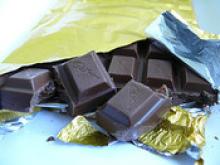On This Day in History – June 22, 1940, the First Dairy Queen Opens Up
On this day in history, the very first Dairy Queen store opened in Joliet, Illinois. Dairy Queen was first introduced to customers (before they were called Dairy Queen) back in 1938 where a father and son (John & Alex McCullough) who owned a mix plant business in Green River, Illinois had been experimenting with a soft serve dairy product. In August of 1938, they had a $.10 sample sale of this new soft serve product at their friend, Sherb Noble’s walk in ice cream shop. Within two hours, Noble dished out over 1,600 servings of this new ice cream treat. Since this new ice cream was such a hit, John and Alex decided to name it the “dairy queen”.
The original Dairy Queen is still located at 501 N Chicago Street in Joliet, Illinois, but it is no longer operational. Today, the largest Dairy Queen franchise is located in Texas. Dairy Queen has over 5,600 stores worldwide.
Dairy Queen become one of the first pioneers for franchised food stores with 10 stores in 1941, expanding to 100 stores by 1947 and 1,446 stores by 1950 with another increase to 2,600 stores by 1955.
Diary Queen has always been well known for holding parties (especially with their delicious ice cream cakes), the place where sports teams go to cool off after a winning game, Corporate functions have been held (mainly in Texas) and all around family nights. Their motto is – Satisfied customers lead to successful restaurants.
Since the economy has taken a slight downturn in 2008 and 2009, several Dairy Queen stores have gone out of business, but Texas still holds the highest spot for most Dairy Queens in the United States.




